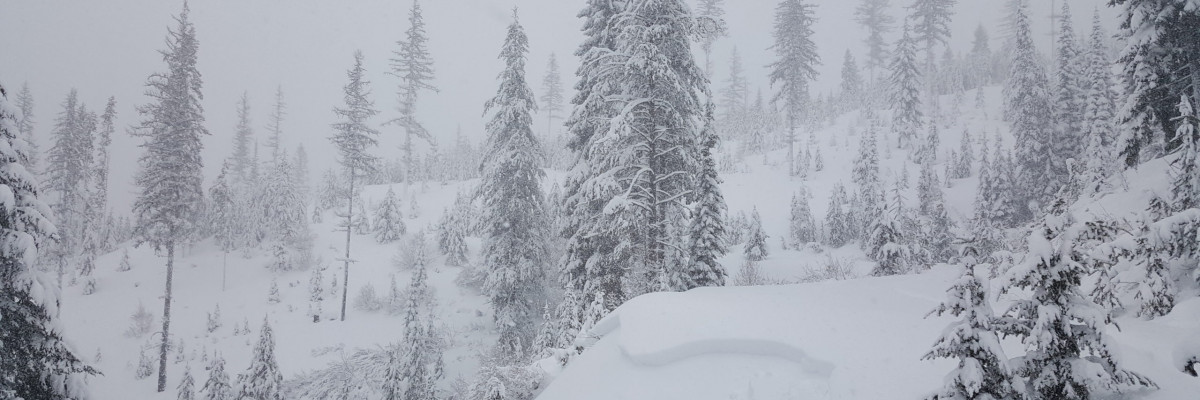The avalanche danger for the west central Montana backcountry is HIGH In wind loaded terrain and CONSIDERABLE elsewhere. Dangerous avalanche conditions exist and travel in avalanche terrain is not recommended. Hazard may increase with high winds and rising temperatures, check for updates tomorrow.
Good morning, this is Jeff Carty with the West Central Montana Avalanche Center’s avalanche advisory for January 3, 2020. This danger rating does not apply to operating ski areas, expires at midnight tonight, and is the sole responsibility of the U.S. Forest Service.
The new year came in with a bang. The storm has delivered up to 4.3″ of Snow Water Equivalent (SWE). More than 2 feet of snow fell in the Bitterroots, the southern Missions, and the Swan. The Rattlesnake received just slightly less. Winds gusted to 50mph and have averaged 35mph over the last three nights transporting considerable snow. Warm, near-freezing temperatures accompanied the storm, and much of the snow was dense as a result.
The storm has put tremendous stress on a snowpack with a very poor structure. In addition to the avalanche that resulted in the fatalities, multiple natural avalanches occurred throughout the forecast area. At least one of these failed in the buried weak layers near to the ground. A slide was remotely triggered at Lolo Pass. Widespread whumphing and cracking have been experienced throughout the forecast area. It has been difficult to assess the full extent of natural avalanching. Visibility has been poor; snow accumulation has been rapid, covering signs and travel has been hazardous. The avalanche cycle is likely more widespread than we are aware of and not yet finished.
Persistent slab is again our primary concern, the Dec. 29th surface hoar adding another persistent weak layer. It is widespread under the new snow throughout the forecast area and present at all elevations above 5000′. The nature of this layer means that avalanches can be remotely triggered from above, below, or adjacent to avalanche slopes from low angle terrain. It is very likely to trigger a slab on this layer, and it may step down to deeper persistent weak layers creating a much larger avalanche.
Wind slab is our other problem. I hesitate to call it a secondary concern as it is very touchy, present on all leeward and cross-loaded slopes, and certain to be triggered by the weight of a person or snowmobile. This wind slab may be several feet thick, and small slides may produce considerable debris capable of deeply burying people. Wind slab avalanches are likely to trigger persistent slabs.
Today temperatures are expected to rise above freezing throughout the forecast area at most elevations and stay elevated overnight. This will create thaw instabilities that may increase avalanche hazard by weakening bonds in the snowpack. Strong southwest winds with gusts to 50mph will continue to load slopes and build wind slabs. Minimal new snow, up to one inch is expected today.
The bottom line:
There is lots of good riding on low angle slopes, and there will be more powder in the future. The outcome of an avalanche with our current problems is not worth the gamble.
Slopes that may not be perceived to be avalanche slopes may avalanche with our current snowpack. Because slopes lack obvious signs or haven’t been witnessed sliding does not mean they are safe. Slopes down to 30º could slide given the low friction and propagation likelihood of the problem layers.
Very careful and critical terrain assessment is required. Travel in avalanche terrain is not recommended. Give a wide margin if traveling below slopes and paths. Always travel with a beacon, shovel, and probe, and knowledgeable partners.
Please share any observations you have on our Public observations page.
Ski and ride safe
























